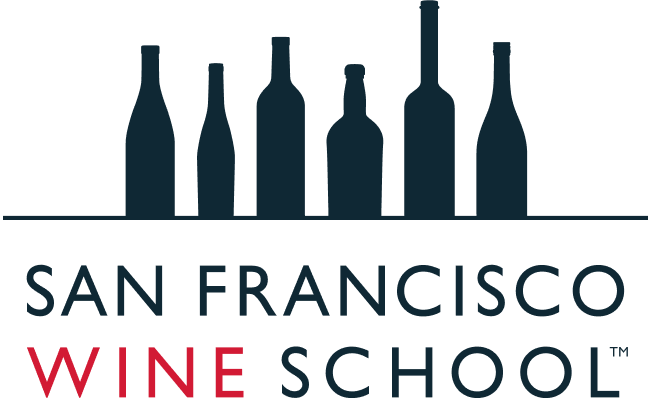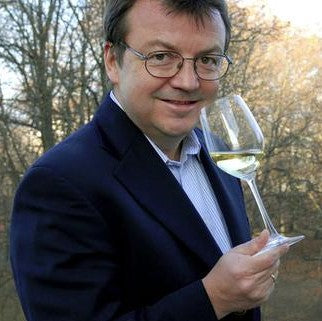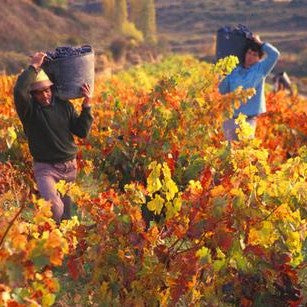by David Furer
A life in theatre didn't prove daunting enough for the Viennese Willi Klinger, now the Managing Director of the Austrian Wine Marketing Board filling in his spare time moonlighting as a lecturer at the University of Natural Resources & Applied Life Sciences for the University of Salzburg, the Austrian Wine Academy, and the Institute of Masters of Wine.
Although harvest for 2014 fell a bit short of anticipated quantities, Austrian wines enjoyed a ninth consecutive annual increase with a record €146m of export sales--6% in quantity (18% for the US) and 5% in value (15% for the US)--with an average price per liter of €.83 to last year's €2.93. Additionally, 2015 marks the launch of Austria's sustainability certification allowing certified vintners the option to utilize 'certified sustainable' labeling accompanying the company's registration number provided it meets the qualifying criteria relating to climate neutrality, water/energy/equipment usage, soil fertility, biodiversity, general high quality standards, social aspects, and economic return. So, since departing in 2006 from the employ of a little-known Italian winery, Willi's watch has been wicked.
One of the world’s consummate wine marketers will soon publish in English the Hedi Klingers Familienküche cookbook he wrote with his mother Hedi. I caught up with Willi in Wien over his cell phone both before & after his hairstyling appointment while I waited out a much-needed Texas rainstorm.
What’s new in Austria that the discerning sommelier should know?
The ongoing process of profiling our regions with its specific denomination (DAC) wines. The most recent is the Wiener Gemischter Satz giving us 16 classified regions in addition to the generic ones where all varieties of grapes and wines can be used. From those 16, nine have been given DAC status. The most intense discussion now of this is in Steiermark which now has three regions. We’re trying to profile them with each of their specialities but first they need to change the name of the region; Südoststeiermark will become Vulkanland as it’s an area upon ancient volcanoes, which may begin as early as the 2016 vintage…but this is an ongoing discussion. A DAC Steiermark for Sauvignon blanc and Weissburgunder is being considered, too. Südsteiermark has two areas—one near Slovenia and another north of it called Sausal upon calcareous limestone known for its Sauvignon blanc and Riesling. We don’t know yet if these two will work as one or two regions. Another project is that of Austrian Sparkling as we’ve a culture for this dating to 1842 when Robert Schlumberger was the cellar master of Ruinart, marrying a Champenoise.
How might a sommelier best describe to his/her customer the difference between a Riesling grown in Kamptal from that grown in Kremstal? Wachau from Rheingau?
The common denomination between Austria and German wines is that Austria is nearly always dry with the only exception being when botrytis rarely occurs. There’s no discussion in Austria of this question as opposed to that in Germany; 99% of the time Austrian Riesling is dry. The weight of our wines is between that of Germany and Alsace, richer than Germany and can be nearly as rich as Alsace with similar alcohol levels though the spirit today is for more precision, more transparency, and less about power. The question of the specific Austrian terroirs is that the most significant Riesling areas where crystalline soils prevail—Wachau and western Kremstal with its occasional appearances of the primary rock, while in the northern parts of Kamptal there is some significant primary rock. The single vineyards are very diverse between the Kremstal and Kamptal, and I’m not a fan of determining flavors between these two; Kremstal is very heterogenous with three types of soil whereas in the west a Riesling tastes like that from Wachau, in the south like a Traisenthal.
In contrast to Italy which owes some of its success in the US market to Americans’ cultural links to and identification with it along with the popularity of its cuisine, to what do you attribute the acceptance and success of Austrian wines in the US?
When I worked for Gaja, in the US we were not aiming for Italian restaurants. There are only 20 Austrian restaurants in the US, and we can’t only rely on them. Austrian wines are relatively unknown so we must find other types of foods to pair with, we weren’t caught in the trap of having to pair our wines with the cuisine of our country. The fresh acidity and lively structure pair well with many foods. It’s fantastic that we pair ‘our’ wines with ‘your’ foods everywhere—fusion and unique cuisines—associating our wines with bistro style seafood dishes and all sorts of vegetarian cuisines. Vegetables love pure but mature wines like ours. We do this with the floral but not oaky style of Austrian wines, the textbook example being at San Francisco’s Slanted Door restaurant.
What are some more specific discoveries in the harmonization of taste you’ve made which might not be so well known or even accepted?
In 2008 I attended the first Congress of Food & Wine in China with wines from all over the world. Many Champagnes fared well there with Asian cuisine, its diversity makes it useful for many dishes. The extra crisp light version of Grüner Veltliner doesn’t suit me but the bigger versions of 2-3 years of age do well. Austrian Weissburgunder pairs well with white and green asparagus but not too lean a version done with a hollandaise sauce. If you don’t want a sweetish wine, which can go well with spicy food, a dry but full Grüner Veltliner can do well. Specifically Austrian Rieslings give a stone fruit character going so well with grilled fish like a trout meunière or done pan-roasted. A Blaufränkisch works well with dishes made with spicy paprika.
The recent increase in plantings of red varieties in Austria has been considerable, the steadily improving quality significant. This situation is somewhat mirrored by Germany a country which has, in great part because of its comparatively higher costs, found it troublesome to market its red wines in the US. With an image strongly linked to its white varietal wines, how will you break through to the US wine professional already inundated with choices?
This problem for Germany wasn’t driven by an export demand but from an internal market demand. Using better techniques such as MLF which wasn’t used before 1985(!), the use of wood which was exaggerated at the beginning but has leveled off, then discovering the local grapes rather than the French varieties they initiated earlier helped to make better wines. We have unique cool climate red grapes of quality to show; in a mature market if we do a Grüner Veltliner tasting then we also do a complementary tasting of Roter Veltliner, Rotgipser, or something like that. The wonderful US sommelier culture allows us to present wines that were never even heard of 20 years ago!
Aside from scattered plantings in Oregon, Washington, and California—particularly with its Zocker vineyard in Edna Valley—Grüner Veltliner hasn’t enjoyed correspondent popularity as a planted variety in the US, something which in the long-term could only benefit the original from Austria. Why do you reckon it hasn’t caught on in the US?
'Grüner Veltliner' is a difficult name to pronounce with the umlaut and dual-word name for the broad swathe of consumers shy to try a new wine at all. If others plant GV we only applaud and support them in this! Other countries often only test other varieties like Mondavi did with Italians long ago. Grüner Veltliner needs a special climate, you need to preserve the acidity and California is sometimes too hot for Grüner Veltliner. I don’t see a Grüner Veltliner avalanche coming--that’s Ok for me.
How has the impact of the changing European continental climate effected Austrian vine production and its resultant wines?
I’m not minimizing the impact of climate change but as we’re a northern, cool climate viticulture like Piedmont we’ve had many good vintages lately which making more vintages of richer wines. We see the movement of winemakers going to higher elevations, the highest terraces and ridge points.
What does the Austrian Wine Marketing Board have planned for the US for the remainder of 2015? For 2016?
We've had a small decrease of our budget. This year the Austrian Wine Summit will bring in 180 journalists with buyers coming to VieVinum in the alternate year of 2016. And a Riesling vertical tasting will be held mid-October in New York.
When not enjoying Austrian wine, what are your favorite drinks—wine or otherwise?
Of course with an international background, I’m in contact with all wines of the world, something that is essential in order to speak of your wines with others—all the great ones of the world of which I’m also a buyer. I remember once Jim Clendenen and Alois Kracher drinking beers outside the London Wine Fair with Jim saying, “it takes a lot of beer to make great wine.” After work if I’m not drinking a sparkling wine I drink one good, well-poured draft pils!
Willi is a featured speaker at next year's International Cool Climate Wine Symposium to be held in Brighton England. For more info go to www.iccws2016.com.
Learn about the regions, climate, grapes, complex labeling and many styles of wines from Germany, Austria, Hungary and more in our Wines of Germany & Eastern Europe Workshop.
Check out our full schedule of programs, workshops and public events. Private, customized experiences and corporate training is also available.



